On Friday the 17th, I spent my day at the Holocaust Memorial Museum and as I had heard from many people, it was an incredibly powerful experience. This museum is unique in that it is part museum and part memorial which for me made the experience even more powerful.
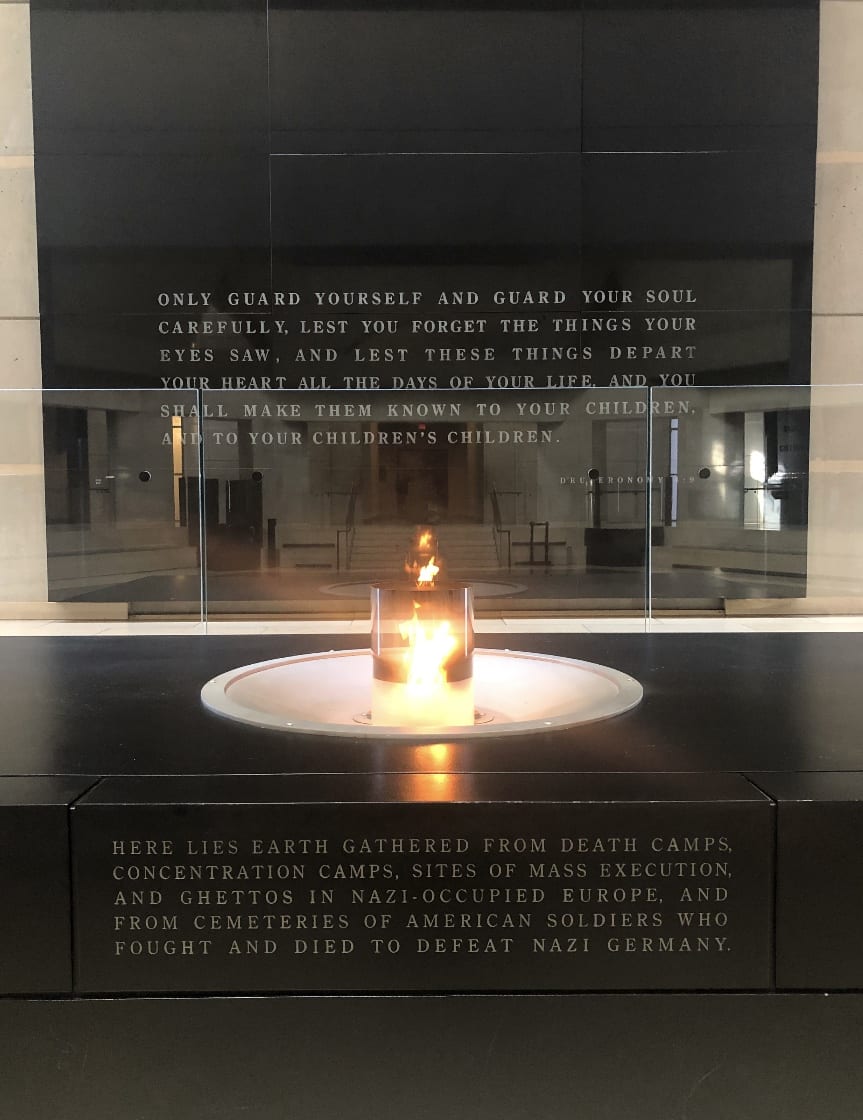
Flame containing earth from the death camps in the large memorial at the end of the museum
At the end of the museum you enter the large memorial where earth from the death camps is burned in the middle with quotes from the Hebrew Bible around the ceiling. Candles that visitors may light for remembrance were surrounding the memorial under names of different death camps. I lit one under the Chełmno concentration camp.
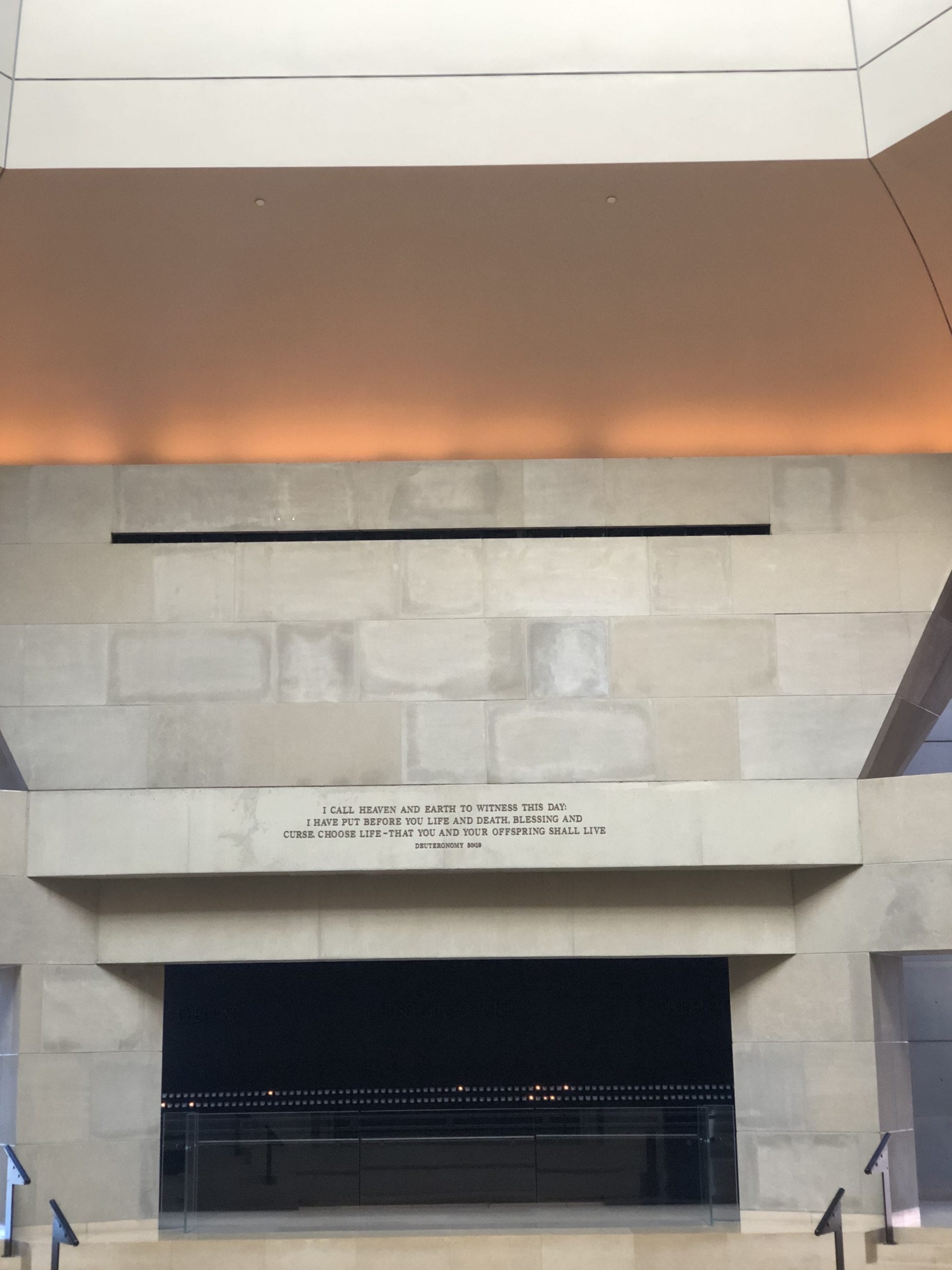
Part of the memorial with candles for visitors to light
One of the first things you see when walking into the museum are large banners with a quote by Elie Wiesel saying “This museum is not an answer, it is a question”
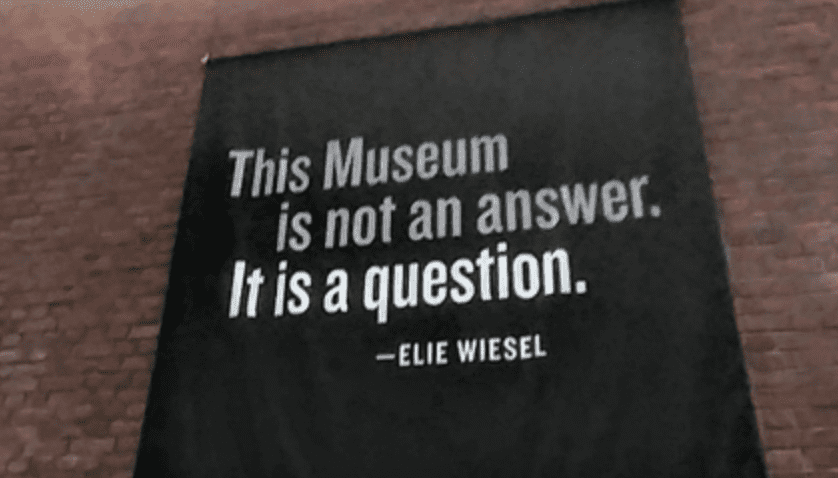
Banner from main area of museum reading “This Museum is not an answer. It is a question.” -Elie Wiesel
The museum part of the building started with receiving an identification card of someone who had been placed in a concentration camp, and a history of who they were and what happened to them. My identification card was of Ruth Freund Reiser who lived in Prague and was in second grade when the Germans occupied Prague. She would have been in ninth grade when she was sent to Auschwitz.
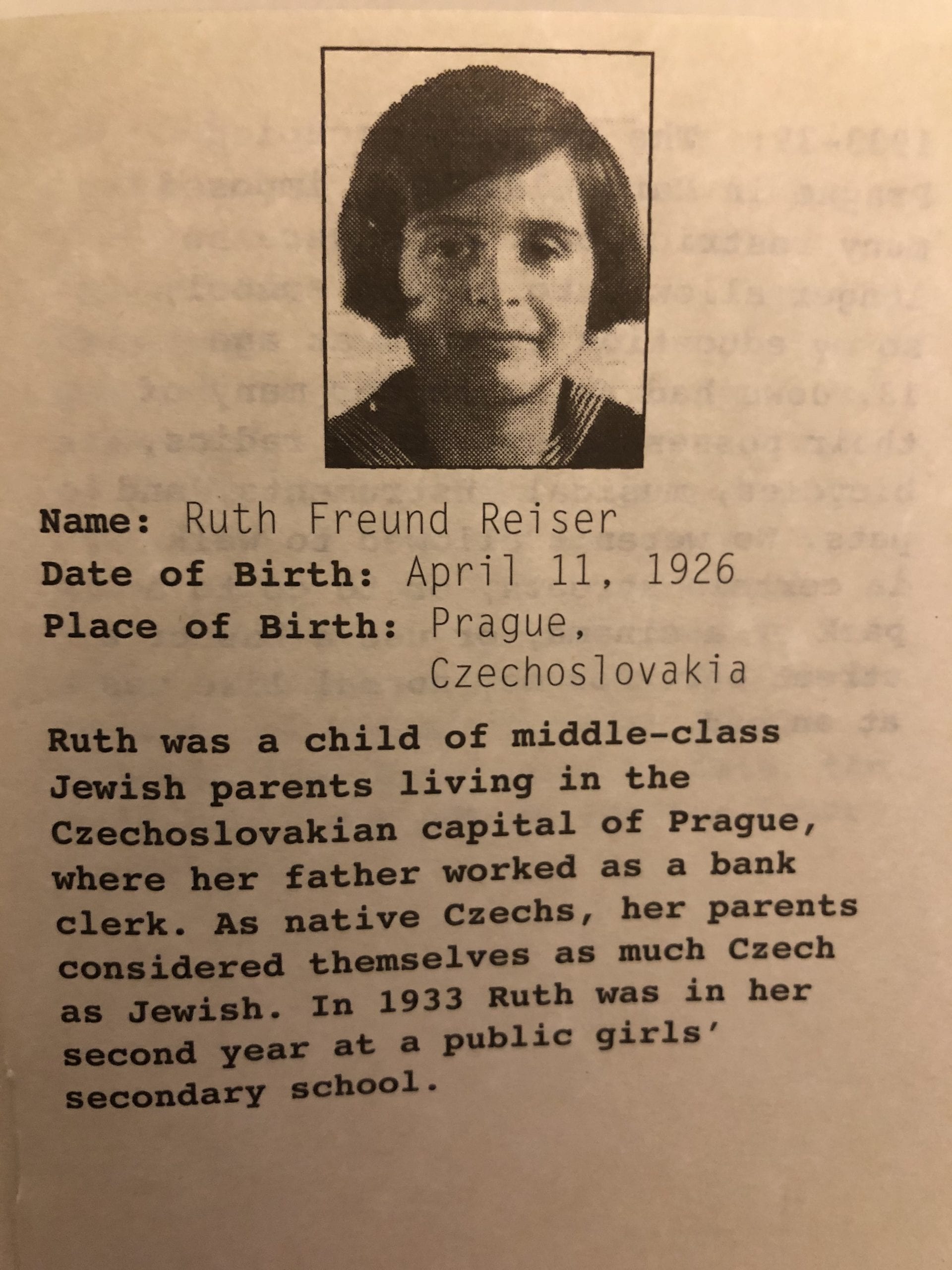
Identification card of Ruth Freund Reiser
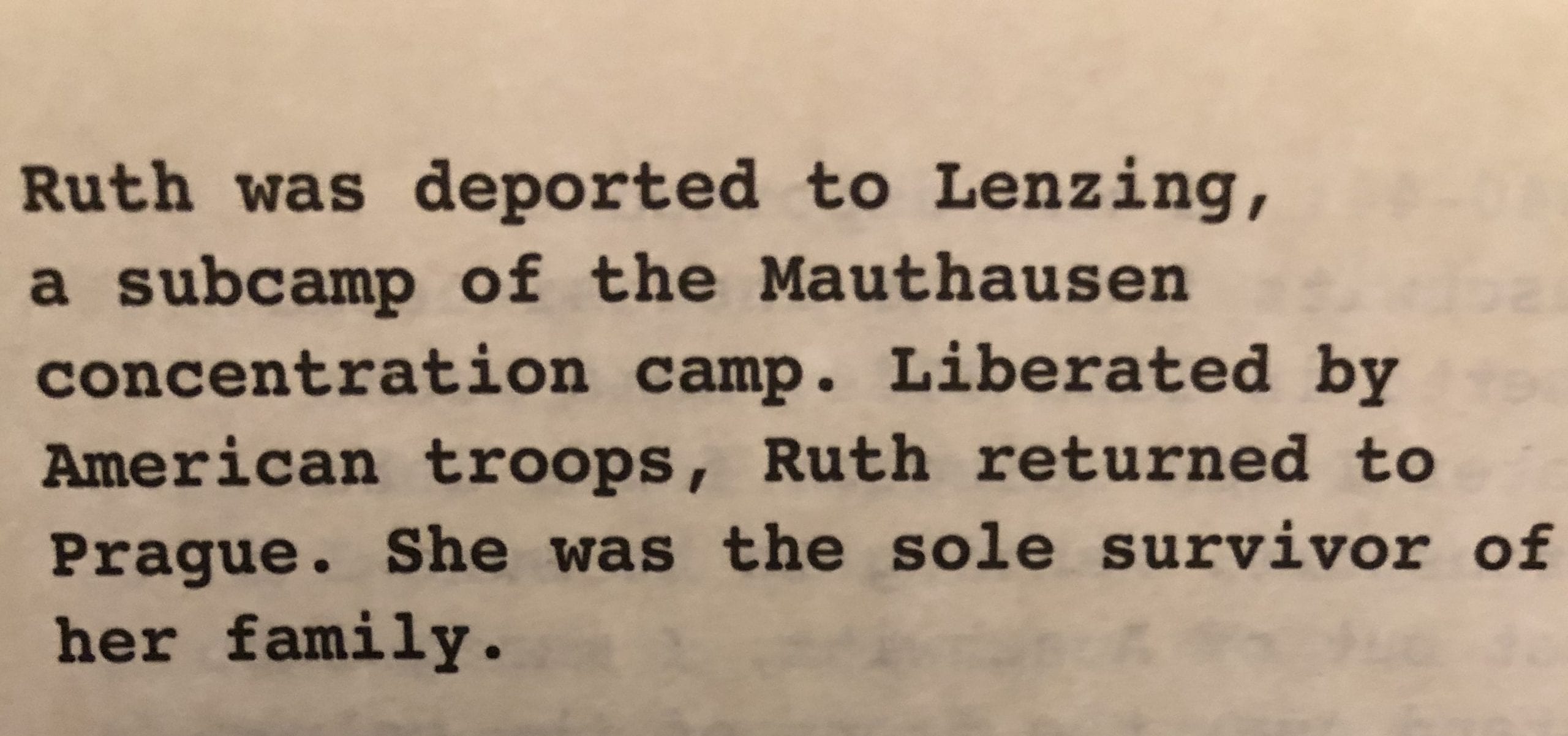
History of Ruth and her liberation
Each floor of the museum was a different time period starting with the rise of Nazi power and turning points of the beginning of the Holocaust, the “Final Solution” floor which was the height of the Nazi power and killing in concentration camps, and finally the “Last Chapter” floor which was about the liberation of concentration camps, resistance to the Nazi’s, and the aftermath of the Holocaust.
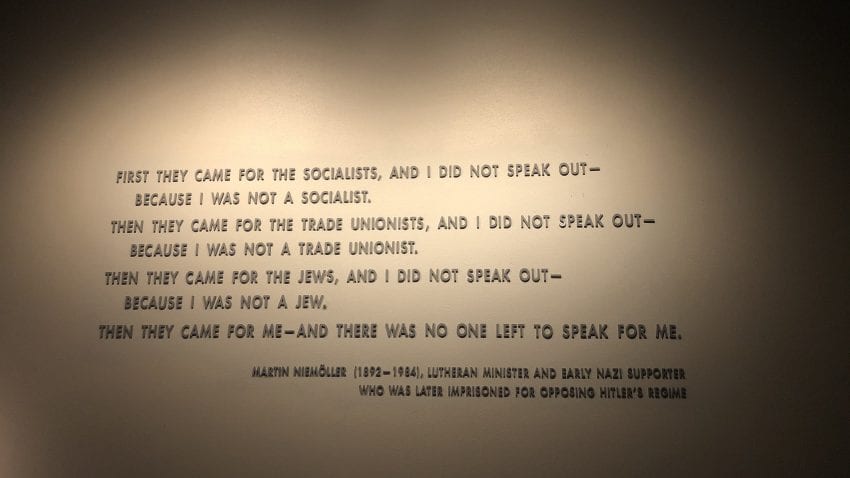
Part of the permanent exhibit in the museum with a quote from Martin Niemöller who was a Nazi supporter but later imprisoned
Walking through a train cart that brought people to concentration camps, seeing pictures and videos of starving prisoners being worked to death, and models of how the concentration camps and gas chambers were set up was a difficult but important experience and left me without words, but I found the emphasis on how many people during this time were not Nazis and were not people placed in concentration camps but were bystanders to be especially powerful. They described how this was an important part of the Nazi’s plan: to alienate those they were persecuting to prevent uprisings and resistance. The compliance of bystanders helped allow the Holocaust to happen and is part of why the museum is not an answer but a question. Why did this happen and how did the world allow this to happen? The emphasis on bystanders and asking questions is meant to make visitors ask themselves how they are treating others and to look in and reflect on how they have been or are being bystanders. The Holocaust Museum has been “sounding the alarm for policymakers and the public about atrocities being committed by the Assad regime” in Syria. The Syrian government has detained over 100,000 of their own citizens and has not commented if those being detained are alive of dead (US Holocaust Memorial Museum website). Since 2011, more than 400,000 people have died (US Holocaust Memorial Museum). There is an exhibit of the conflict in Syria in the museum with evidence of the crimes being committed and testimony from a released survivor. Walking out of the Syria exhibit guests are again greeted with a large banner reading “What’s Your Question? #AskWhy”. I challenge whoever reads this to ask themselves how they’re being a bystander and why. Whether it be the conflict in Syria, the Muslim detention centers in China, or rights being questioned or taken away here in the US, what are you doing to make your voice heard and stand up for injustice? One thing I’ve learned from this class is how easy it is to call or write to your representative. When visiting the senate building we were able to walk into the office and speak with a staff member and tell them what is important to us and what we have concerns about. I’ve also learned about many nonprofits and other groups that are fighting for change and lobbying to representatives to make the world better. We have a voice and an ability to make change happen, it just starts when we collectively decide to stop being a bystander and ask questions.
Campbell, Charlie. “Leaked Files Claim to Reveal Details of China’s Muslim Camps.” Time, Time, 25 Nov. 2019, time.com/5738401/xinjiang-uighur-muslim-camps-china-cables/.
“Syria: Please Don’t Forget Us.” United States Holocaust Memorial Museum, United States Holocaust Memorial Museum, www.ushmm.org/online-calendar/event/MASYRIAEXHIB1217.
United States Holocaust Memorial Museum, United States Holocaust Memorial Museum, www.ushmm.org/.
Wikipedia contributors. “Chełmno extermination camp.” Wikipedia, The Free Encyclopedia. Wikipedia, The Free Encyclopedia, 17 Jan. 2020. Web. 18 Jan. 2020.
